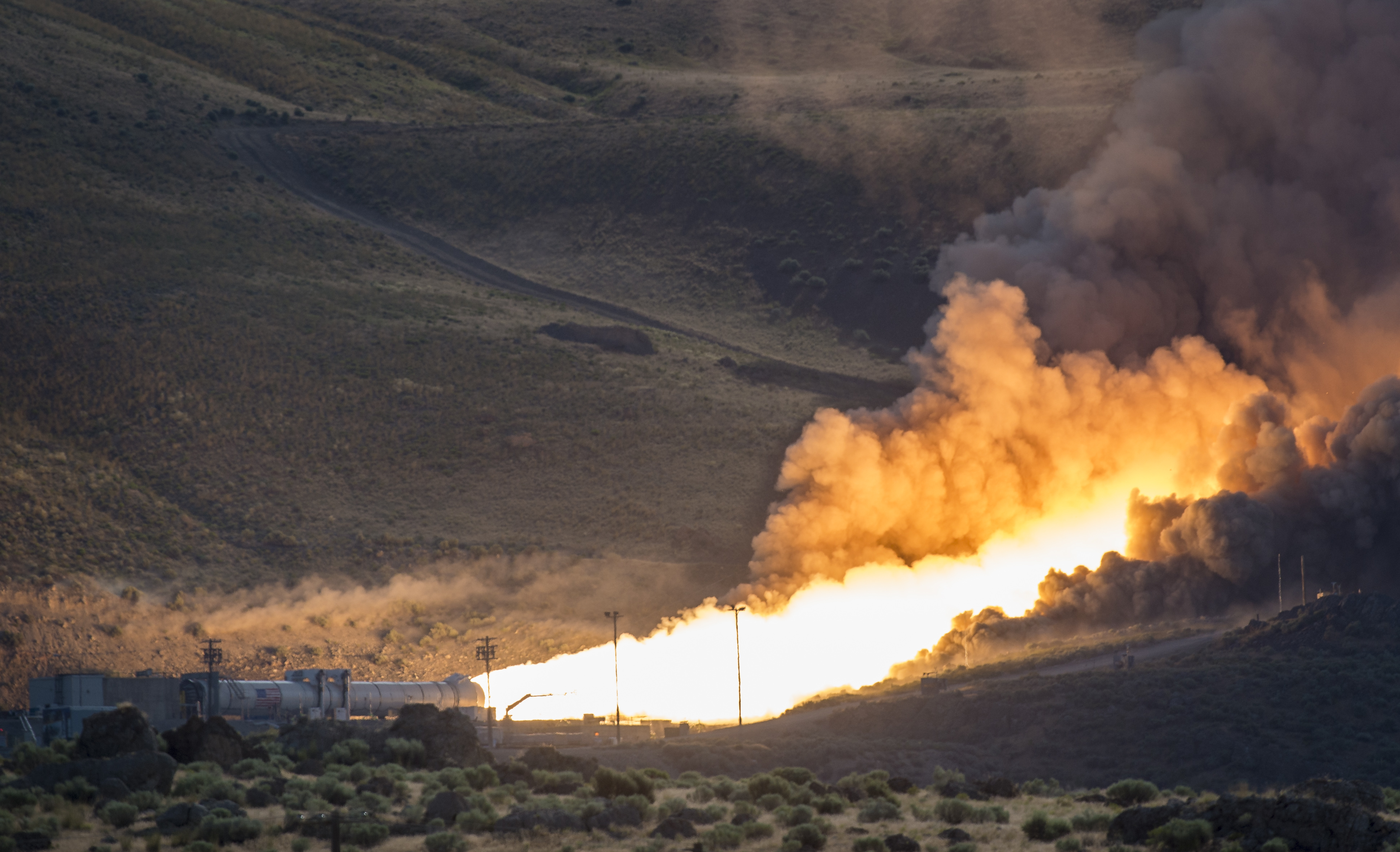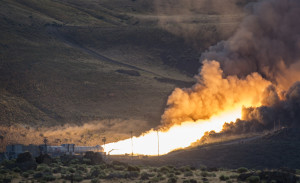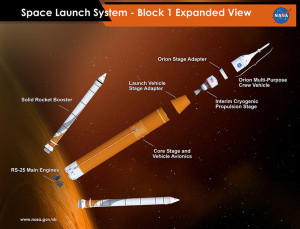There will be two of these boosters on NASA’s new rocket, with four more engines powering the core stage.
This new rocket, Space Launch System (SLS), will power the human exploration of deep space.
On Tuesday, June 28th, the solid rocket booster pictured above fired for the second and final ground qualification test before the rocket’s first flight in 2018.
The first test supported the booster qualification at high-temperature launch conditions and took place last year. The final test two days ago provided data for the colder end of the accepted propellant temperature range. It’s important to understand how temperature affects the way propellant burns.
For just over two minutes, the booster fired in Utah at Orbital ATK’s test facilities. A founding member of the Coalition, Orbital ATK is the prime contractor for the solid rocket boosters.
The two boosters will provide more than 75% of the total launch thrust. Each 17-story tall booster is made of five segments and is derived from NASA’s space shuttle boosters.
This qualification test provides essential data that supports booster certification. Hundreds of instrumentation channels captured data on the booster which will now be evaluated by engineers.
The next time the booster fires will be for the first launch of NASA’s new rocket. It will carry the Orion crew capsule beyond the moon on a journey lasting around three weeks before returning to Earth. This is known as Exploration Mission-1 (EM-1), and the flight will also carry small satellites as secondary payloads into deep space. Future missions of SLS will be manned and take humans deeper into space than they’ve ever gone before, and will power the nation on its Journey to Mars.
Get a sense of the booster’s tremendous power by watching the test here.
For more about the SLS rocket, click here.
Learn more about the Journey to Mars at NASA.gov.



